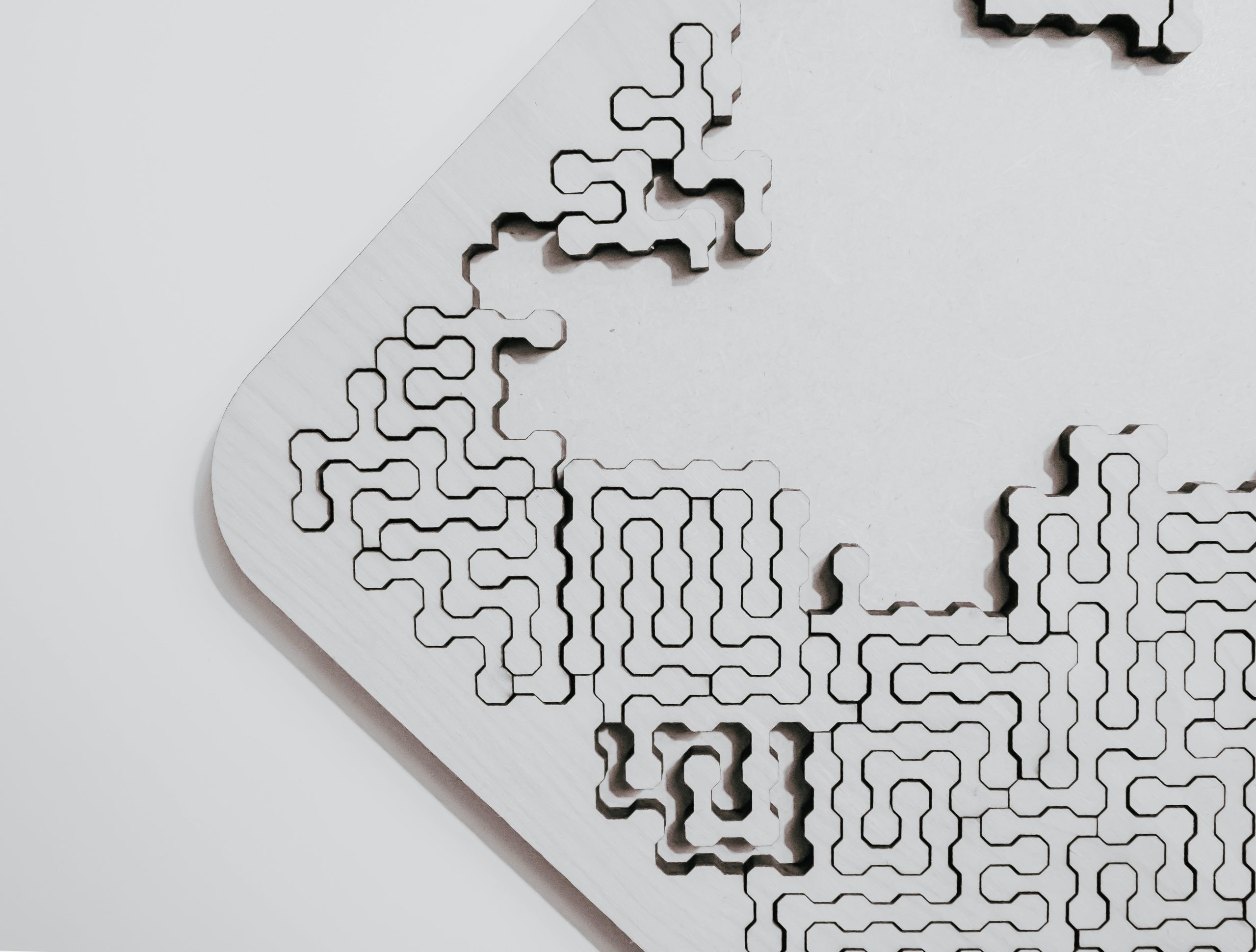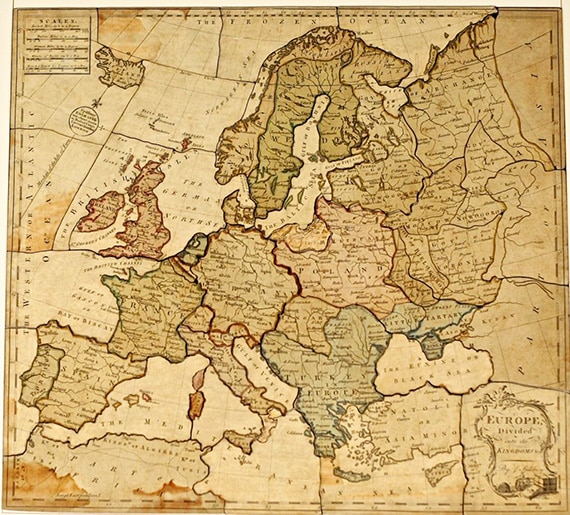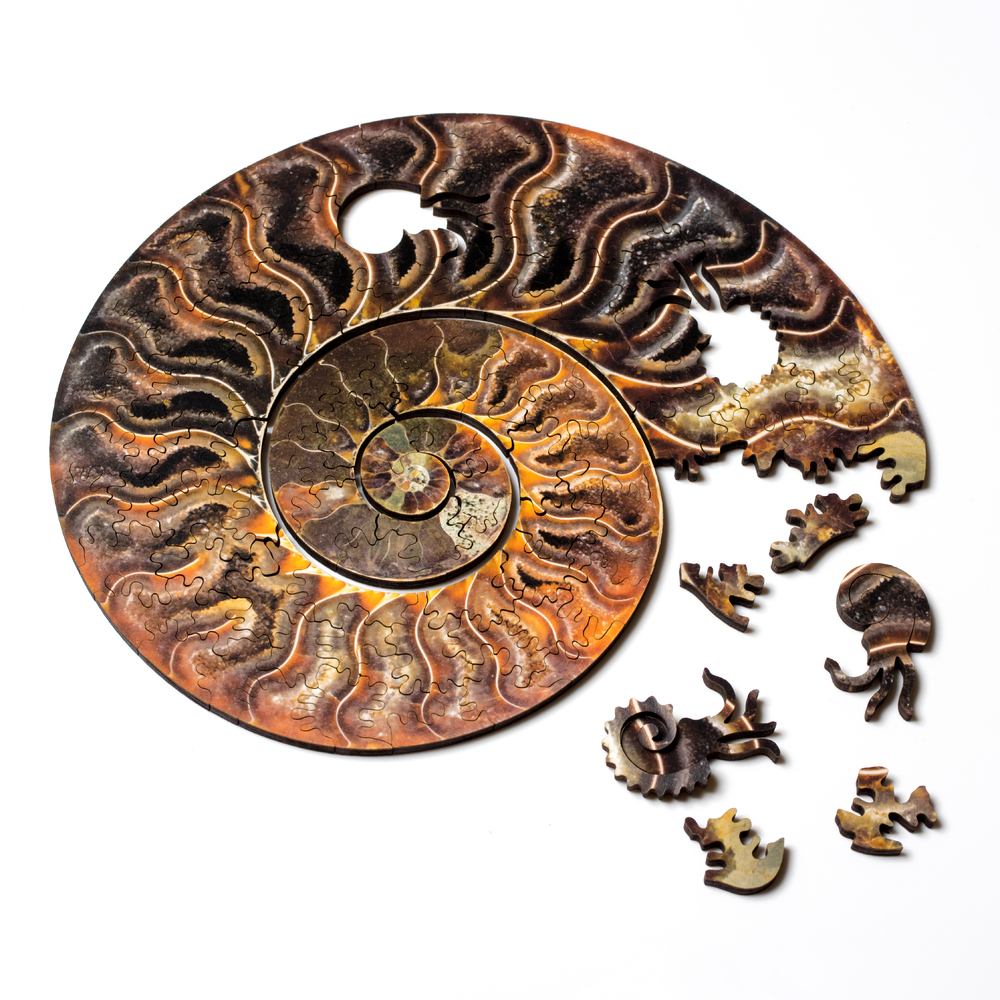Jigsaw puzzles have captivated minds for centuries, evolving from intricate, hand-cut wooden pieces to digital applications that can be played on phones, tablets, and computers.
While they began as educational tools, they quickly became a favorite pastime for hobbyists of all ages.
In this article, we’ll explore the rich history of jigsaw puzzles, tracing their origins, their evolution through different materials and manufacturing techniques, and their current digital transformation.
The Origins of Jigsaw Puzzles
The history of jigsaw puzzles dates back to the 18th century when they were initially crafted as educational aids. The earliest known jigsaw puzzle was created around 1766 by John Spilsbury, a London-based mapmaker and engraver.
He mounted maps onto wood and carefully cut around the country borders, allowing students to piece the maps back together as a way to learn geography. These early puzzles were called “dissected maps” and became popular in European classrooms.
Soon after their introduction, dissected maps expanded beyond geography. Educators began using puzzles to teach history, religious stories, and even anatomy.
The painstaking process of crafting each piece by hand made these puzzles relatively rare and expensive, but their educational value ensured their continued use in elite schools across Europe.
The 19th Century: The Rise of Hand-Cut Wooden Puzzles
Throughout the 19th century, the popularity of puzzles grew beyond educational use, turning into a form of entertainment for children and adults alike.
Craftsmen hand-cut puzzles from wood using fine tools such as marquetry saws. These puzzles were labor-intensive and expensive, often purchased by the wealthy as a luxury item.
By the late 1800s, puzzle makers started incorporating more intricate designs, including scenes from everyday life, famous paintings, and fairy tales.
These puzzles were primarily made from mahogany or other hardwoods, making them durable but also costly.
Due to their handmade nature, no two puzzles were exactly alike, and puzzle enthusiasts prized these unique pieces as works of craftsmanship.
At the same time, puzzle-makers began experimenting with different cutting techniques, including the interlocking pieces we recognize today.
Early puzzles often lacked this feature, meaning that pieces could be placed in multiple positions, making solving them more challenging.
The Early 20th Century: The Rise of Cardboard Puzzles
Although cardboard puzzles were available as early as the early 1800s, they were initially perceived as lower quality compared to traditional wooden puzzles.
As a result, wooden puzzles remained dominant for much of the 19th century, particularly among wealthier buyers who valued their durability and craftsmanship.
However, the early 20th century brought significant advancements in manufacturing, particularly with the introduction of die-cutting technology. This innovation allowed for the mass production of puzzles, reducing costs and making them more accessible to a wider audience.
During the Great Depression in the 1930s, jigsaw puzzles became a popular form of inexpensive entertainment.
With people seeking affordable ways to enjoy their time at home, puzzles provided an accessible and engaging activity. Many companies even distributed promotional puzzles as advertisements for their products, further boosting their popularity.
The perception of cardboard puzzles gradually shifted as their affordability and high-quality printing capabilities made them appealing to a growing number of households.
By the mid-20th century, cardboard puzzles had largely overtaken wooden puzzles in mainstream popularity, solidifying their place as a staple of home entertainment.
The Mid to Late 20th Century: The Golden Age of Puzzles
From the 1950s to the 1980s, puzzles became a household staple. Advances in printing technology enabled the production of vibrant, high-quality images on puzzles.
Jigsaw puzzles took on new themes, from famous landscapes and works of art to pop culture references. Puzzles of iconic locations, space exploration, and even cartoon characters became widely available.
Additionally, puzzle companies introduced specialty puzzles such as 3D puzzles, shaped puzzles, and even double-sided puzzles to challenge enthusiasts further.
During this era, brands like Ravensburger, Springbok, and Milton Bradley became well-known names in the puzzle industry.
Collectors also began to take an interest in vintage puzzles, driving up the value of early hand-cut wooden pieces.
Some rare puzzles from the 19th and early 20th centuries are now highly sought after by enthusiasts and can fetch significant prices at auctions.
The Digital Revolution
Jigsaw Puzzles in the 21st Century
The rise of computers and mobile devices ushered in a new era for jigsaw puzzles. With the advent of puzzle apps and digital platforms, players can now enjoy jigsaw puzzles anywhere without the need for physical pieces.
Digital puzzles offer unique features such as adjustable difficulty levels, timed challenges, and even multiplayer modes that allow players to compete with friends and family remotely.
Another benefit of digital puzzles is the ability to create personalized puzzles. Many services allow users to choose between various difficulty levels or upload their own images and turn them into puzzles, adding a customized and sentimental element to the experience.
Online platforms to jigsaw
Platforms like JigsawPuzzles.io have introduced a social aspect to online puzzling. This website allows users to work on puzzles alone or collaborate with friends via private links, creating a shared experience even when apart.
For those who enjoy a communal challenge, public rooms provide the opportunity to piece together puzzles with strangers from around the world. With a continuously growing collection of images and customizable piece counts,
JigsawPuzzles.io caters to all skill levels. Additionally, registered users can save their progress, making it easy to return to a puzzle at any time.

The use of Augmented Reality
The fusion of physical puzzles with digital enhancements has led to innovations such as augmented reality puzzles. Puzzle Tubes look to revolutionize the landscape with traditional jigsaw puzzles that transform into interactive digital experiences.
Their AR-enhanced puzzles bridge the gap between classic puzzling and modern technology, adding an extra layer of engagement and surprise for users who enjoy both physical and digital challenges.
Combing the digital and physical
Another intriguing advancement in puzzle design comes from Nervous System, a studio that blends art, science, and technology to create one-of-a-kind wooden jigsaw puzzles.
Using custom software inspired by natural patterns, they generate intricate interlocking pieces that defy traditional puzzle shapes.
Their laser-cut wooden puzzles, crafted in a solar-powered studio, offer a fusion of craftsmanship and computational design.
Final thoughts
The journey of jigsaw puzzles from hand-cut wooden pieces to digital innovations showcases their enduring popularity.
With a history spanning over 250 years, these puzzles have adapted to changing times while maintaining their charm and cognitive benefits.
Whether you prefer the feel of traditional cardboard pieces or the interactive features of a mobile app, jigsaw puzzles remain a beloved pastime for millions around the world.
As puzzle technology continues to evolve, we may see even more interactive experiences in the future, from virtual reality puzzles to AI-generated challenges tailored to individual skill levels.
One thing is certain—jigsaw puzzles, in all their forms, will continue to bring joy and challenge to generations to come.








